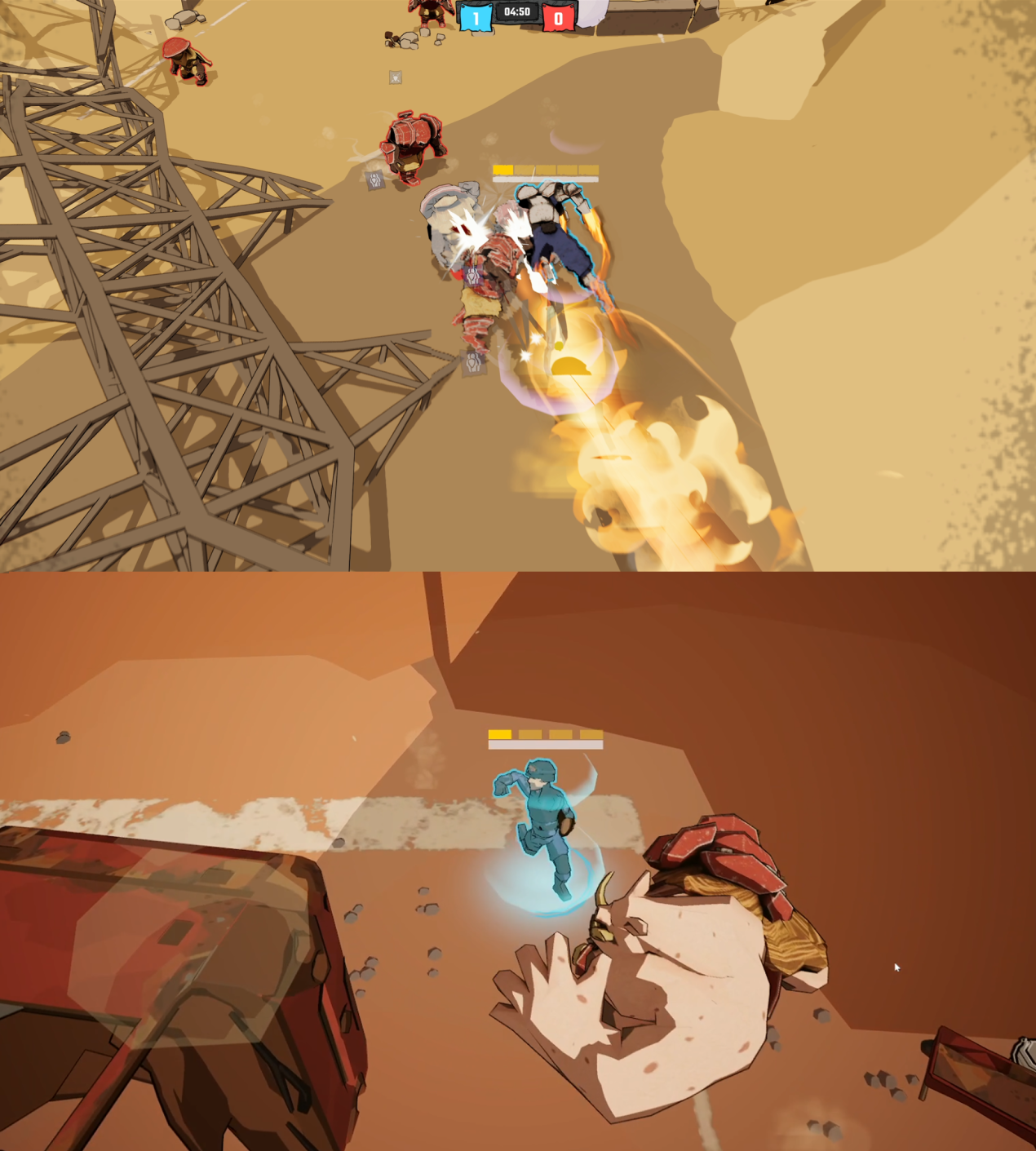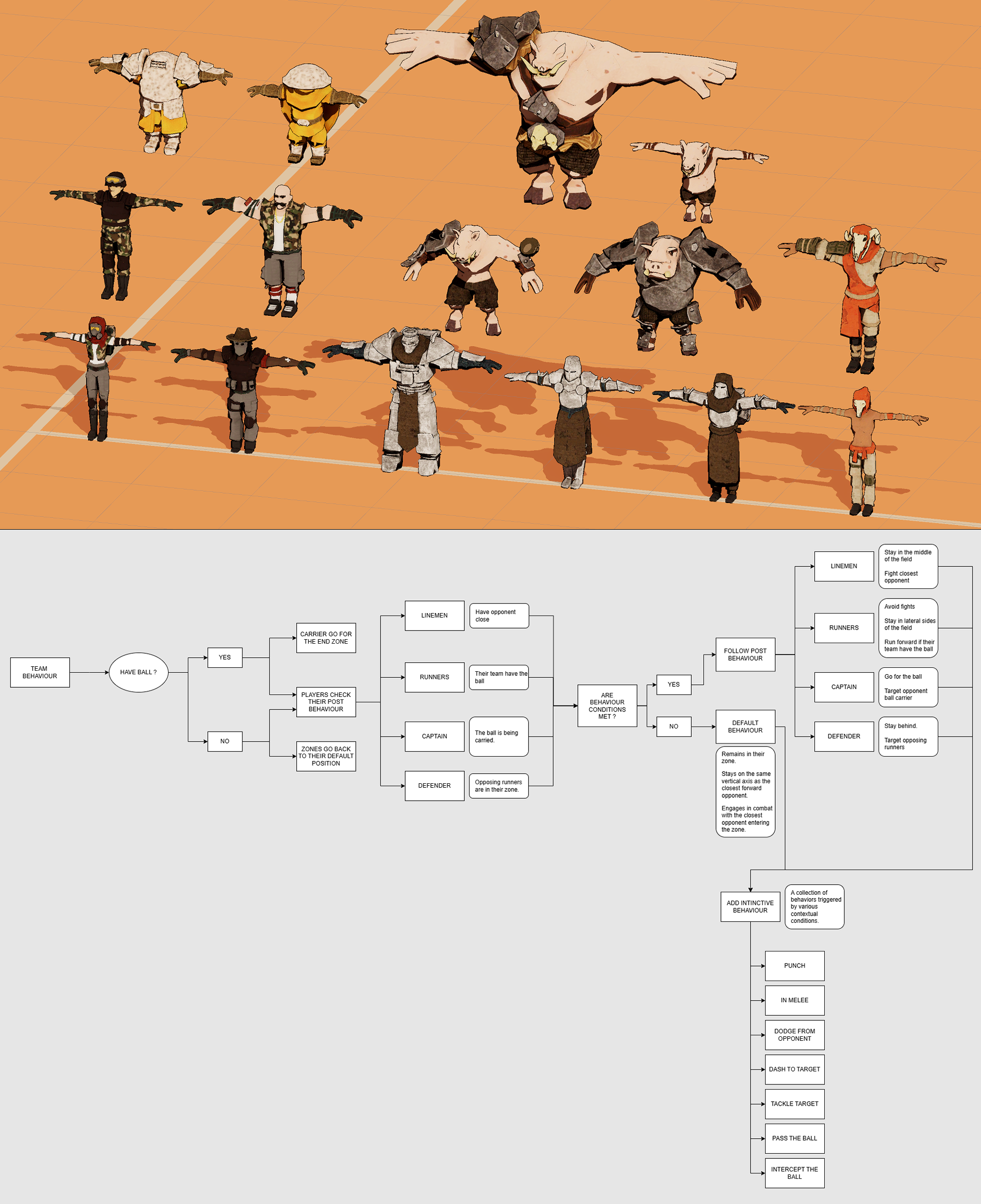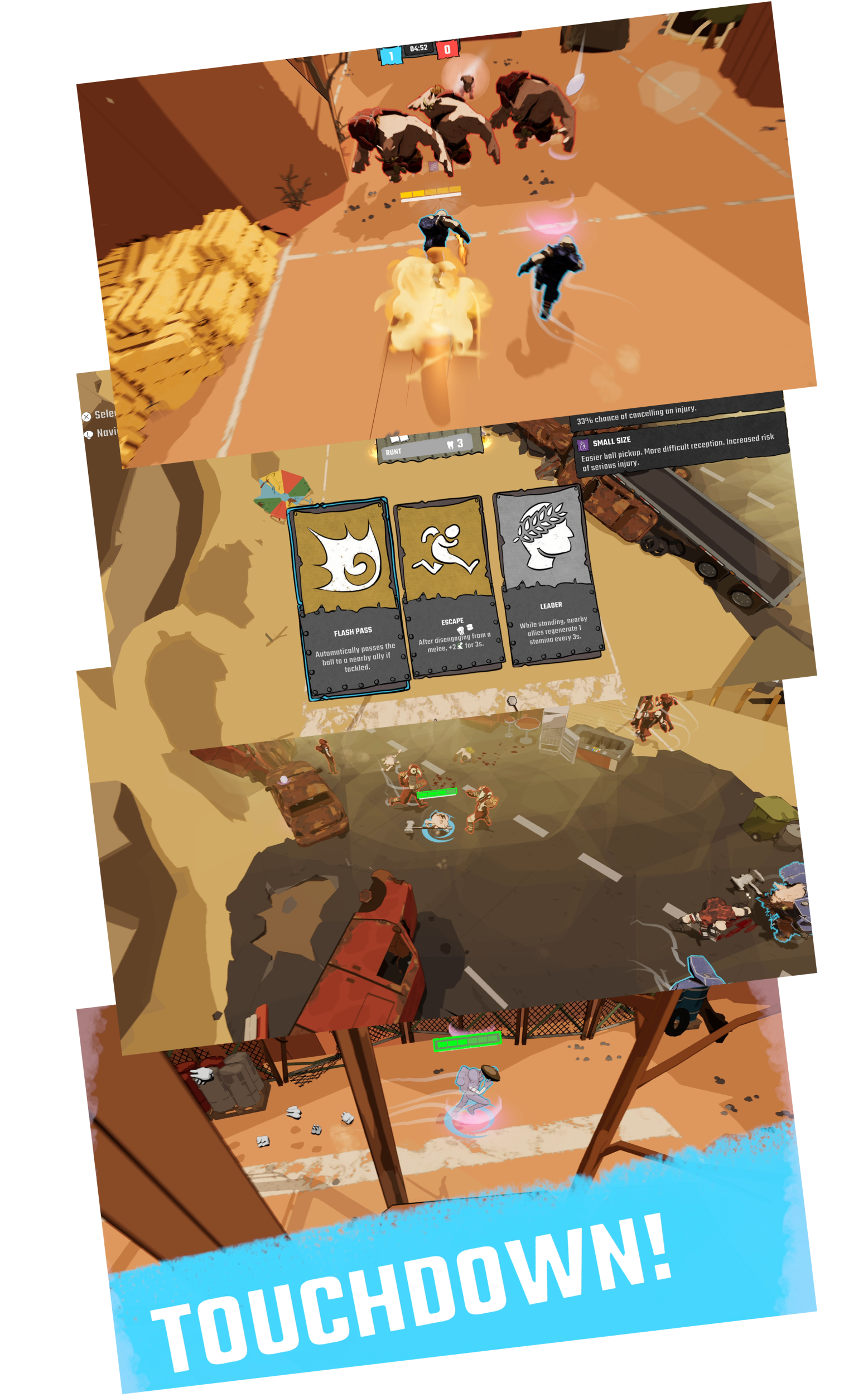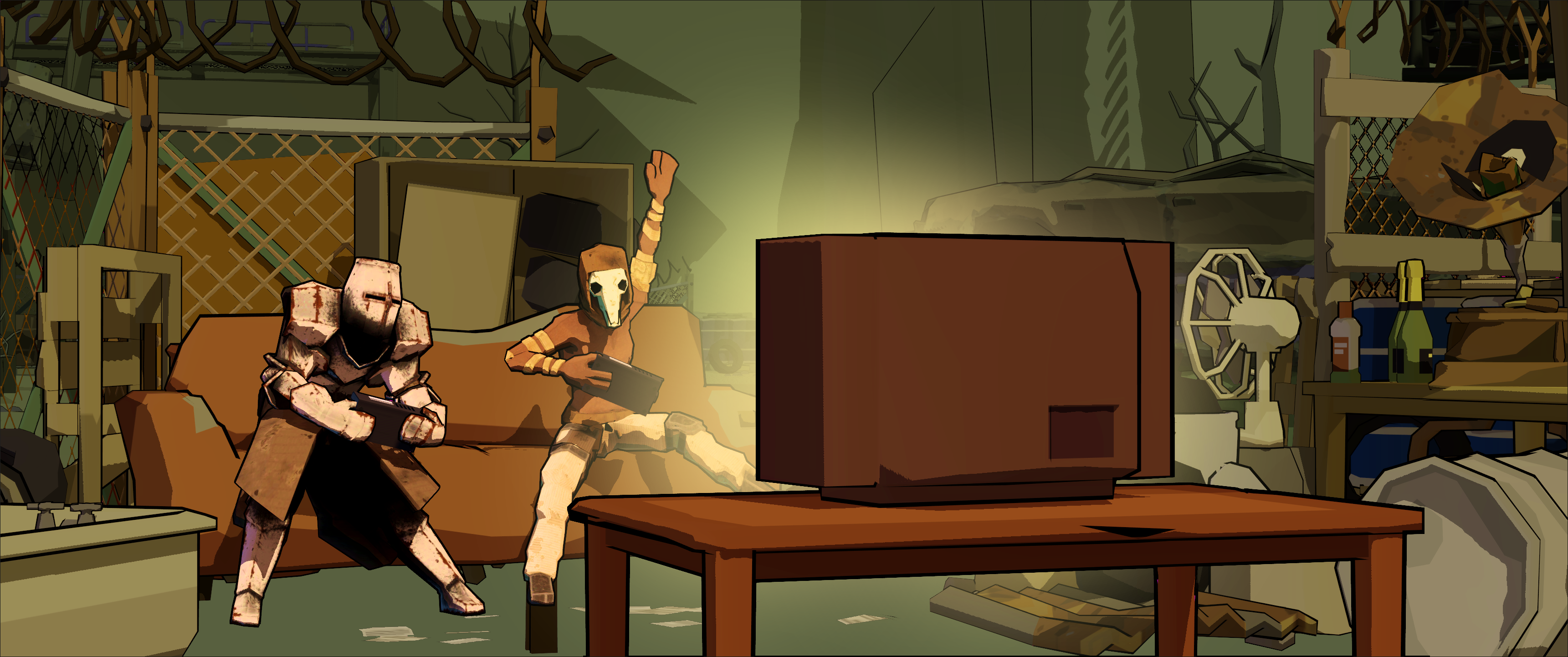As the sole designer of Rough Rivals, I played a central role in shaping the game’s vision from concept to release.
My responsibilities ranged from designing and implementing core gameplay systems, balancing mechanics through prototypes and iterative playtesting, to building the 3D world, characters and UI, in order to deliver a cohesive and engaging player experience.
I also guided the project’s soundtrack, providing clear documentation and direction to my musician collaborator.
I had to design an immediately accessible gameplay while still offering a sense of escalating intensity. To achieve this, the game loop is split into two alternating phases.
With the on-field action being fast and frenetic, giving players breathing breaks between phases and letting them progressively upgrade their team by adding players at a cost proved an effective way to balance the game loop’s intensity and progression.
Early Game : Accessibility
Mid to late game : escalation

Designing the combat system was about finding the right balance between timing, attack delay, and energy management. The main challenge centered on the "charge attack", a fast triggered powerful tackle that clashed with the core mechanic of delayed punches.

Creating an AI system that feels alive and responsive was key to maintaining tension and challenge without overwhelming the player. I also wanted to implement singular lore-accurate behaviors to teams from different stories / backgrounds / archetypes.

To keep the experience accessible and fun for casual players, I had to focus on streamlining information and reducing cognitive load during gameplay.
I observed that some players don’t even read the skills they choose but have fun anyway on the field (mostly during local multiplayer 1v1s).
Others appreciated the skills system optimization potential when trying to beat the challenging levels of the solo mode.

